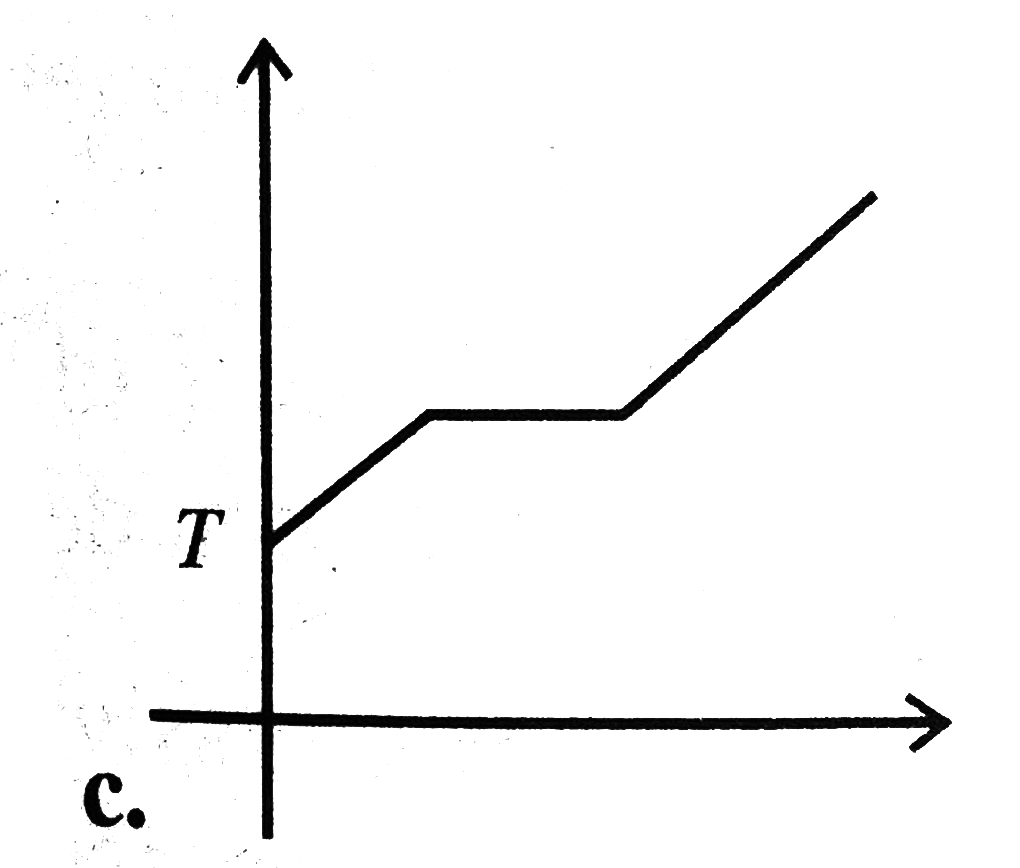If liquefied oxygen at 1 atmospheric pressure is heated from 50K to 300k by supplying heat at constant rate. The graph of temperature vs time will be




The correct Answer is:C
Temperature of liquid oxygen will first increase till boiling point.
Then phase change will take place from liquid to gas during which temperature remain same. After this temperature of gaseous oxygen will further increase. All this is correctly shown by graph (c)
Topper's Solved these Questions
- ARCHIVES 1 VOLUME 6Book:CENGAGE PHYSICSChapter:ARCHIVES 1 VOLUME 6Exercise:Multi Correct
Explore 13 Videos
- ARCHIVES 1 VOLUME 6Book:CENGAGE PHYSICSChapter:ARCHIVES 1 VOLUME 6Exercise:Assertion-Reasoning
Explore 1 Video
- ARCHIVES 1 VOLUME 6Book:CENGAGE PHYSICSChapter:ARCHIVES 1 VOLUME 6Exercise:True/False
Explore 7 Videos
- ARCHIVES 2 VOLUME 6Book:CENGAGE PHYSICSChapter:ARCHIVES 2 VOLUME 6Exercise:Integer
Explore 4 Videos
Similar Questions
In the above problem if heat is supplied at a constant rate of q=10cal/min, then plot temperature versus time graph.
View Solution1 mole of an ideal gas at constant atmospheric pressure is heated to increase its volume by 50% of initial volume. The change in temperature made was 300 K to T K. Then calculate final temperature.
View Solution
Knowledge Check
Four grams of graphite is burnt in a bomb calorimeter of heat capacity 30kJK−1 is excess of oxygen at 1 atmospheric pressure. The temperature rises from 300 to 304 K. What is the enthalpy of combustion of graphite (in kJ mol−1)?
A360B1440C−360D−1440The temperature of 20 litres of nitrogen was increased from 100 K to 300 K at a constant pressure. Change in volume will be
A80 litreB60 litreC40 litreD20 litreThe temperature of 20 litres of nitrogen was increased from 100 K to 300 K at a constant pressure. Change in volume will be
A80 litresB60 litresC40 litresD20 litres
The rate of a reaction increases to 2.3 times when the temperature is raised form 300K to 310K. If Q is the rate constant at 300K, then the rate constant at 310K will be equal to
View SolutionTwo moles of a certain ideal gas at 300K is cooled at constant volume so that the pressure is reduced to half the original value. Now the gas is heated at constant pressure so that its temperature becomes equal to the initial temperature. Find the total amount of heat absorbed by the gas in the process.
View SolutionThe rate of a certain reaction increases by 2.5 times when the temperature is raised from 300K at 310K. If k is the rate constant at 300K then the rate constant at 310 K will be equal to
View SolutionThe rate of a certain reaction increases by 2.3 times when the temperature is raised form 300K to 310K. If k is the rate constant at 300K, then the rate constant at 310K will be equal to
View SolutionA flask containing air (open to the atmosphere) is heated from 300 K to 500 K. The preccentage of air escaped to the atmosphere is
View Solution

